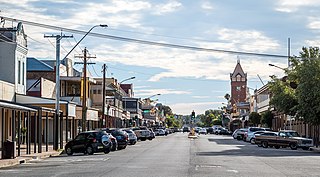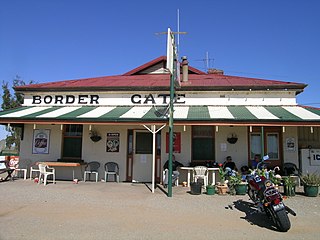
Cockburn is a town and locality in the Australian state of South Australia located in the east of the state at the border with New South Wales near Broken Hill. The town population consists of roughly 25 people with a greater regional community of 180 as of 2005.

Southern & Silverton Rail was an Australian rail operator. Founded in 1886 as the Silverton Tramway Company, it operated the Silverton Tramway until 1970, before diversifying into operating hook and pull services, being renamed Silverton Rail in the mid-1990s. In 2006 it was purchased by South Spur Rail Services and rebranded as Southern & Silverton Rail, before both were sold to Coote Industrial. In June 2010 it was sold to Qube Logistics and rebranded.
The Berrima railway line is a partly closed private railway line in New South Wales, Australia. It was a short branch from the Main South line to serve the Berrima Colliery.

The Silverton Tramway was a 58-kilometre-long 1,067 mm railway line running from Cockburn on the South Australian state border to Broken Hill in New South Wales. Operating between 1888 and 1970, it served the mines in Broken Hill, and formed the link between the 1,435 mmstandard gauge New South Wales Government Railways and the narrow gauge South Australian Railways lines. It was owned and operated by the Silverton Tramway Company (STC).

The Z20 class is a class of steam locomotive built for and operated by the New South Wales Government Railways of Australia.

The South Australian Railways X class was a class of 2-6-0 steam locomotives operated by the South Australian Railways.
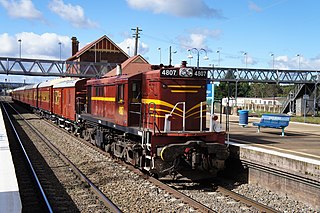
The Alco DL531 is a model of railroad locomotive manufactured and operated in Australia.
The Silverton Tramway 48s class are a class of diesel locomotives built by AE Goodwin, Auburn for the Silverton Tramway in 1960-1961. The State Rail Authority 48 class and South Australian Railways 830 class are of a very similar design.

Locomotive 'Pioneer' 1001 was two-cylinder, simple, non-condensing, coal-fired, 0-6-0 Saddle Tank locomotive for the New South Wales Government Railways (NSWGR) built in 1861 by Manning Wardle.

The E.17 class was a class of patent long boiler steam locomotive built by the Robert Stephenson and Company for the New South Wales Government Railways of Australia.
Cockburn railway station was located on the Silverton Tramway serving the town of Cockburn on the New South Wales / South Australian state border.

Sulphide Street railway station was the terminus of the Silverton Tramway in New South Wales, Australia. It served the city of Broken Hill.

The Silverton Tramway Y class was a class of 2-6-0 and 2-6-2T steam locomotives operated by the Silverton Tramway Company of Australia.
The Silverton Tramway A class was a class of 4-6-0 steam locomotives operated by the Silverton Tramway Company.
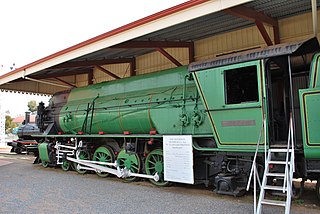
The Silverton Tramway W class was a class of 4-8-2 steam locomotives operated by the Silverton Tramway Company.

The Cangai Copper Mine was operated by Grafton Copper Mining Company Ltd at Cangai in northern New South Wales from 1904 to 1917.
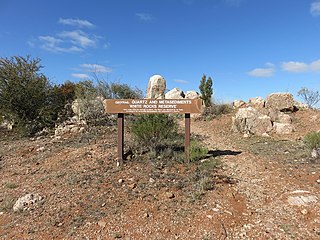
1915 Picnic Train Attack and White Rocks Reserve is a heritage-listed former tramway and now visitor attraction at Hynes Street, Broken Hill, City of Broken Hill, New South Wales, Australia. It was the site of the only attack during World War I that occurred on Australian soil. The property is owned by NSW Department of Industry - Lands and Silverlea Services. It was added to the New South Wales State Heritage Register on 29 June 2018.


